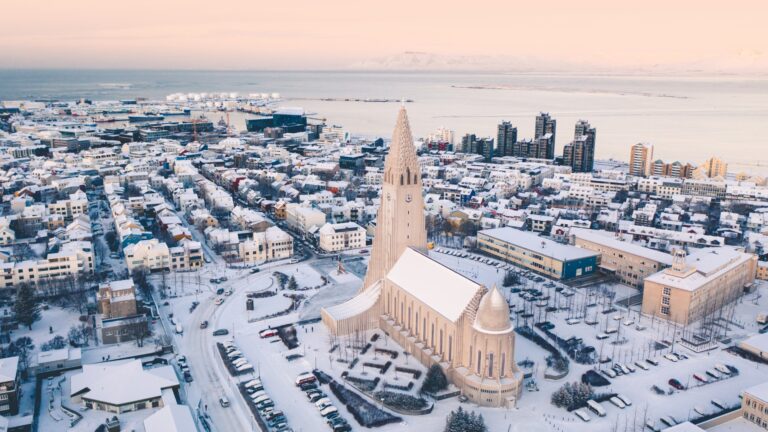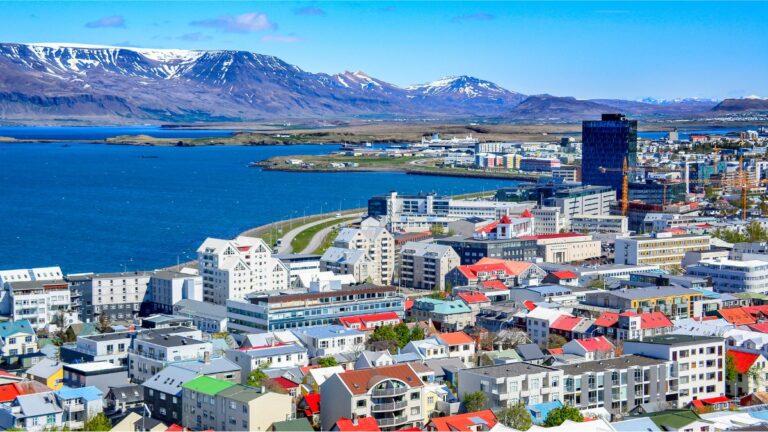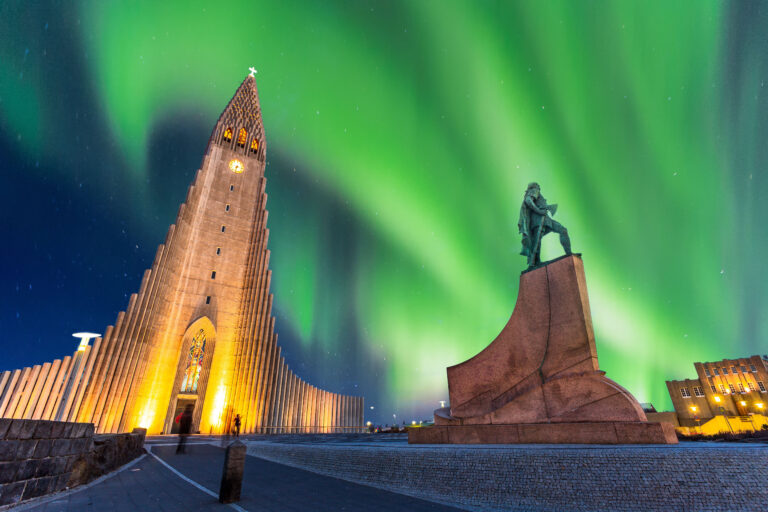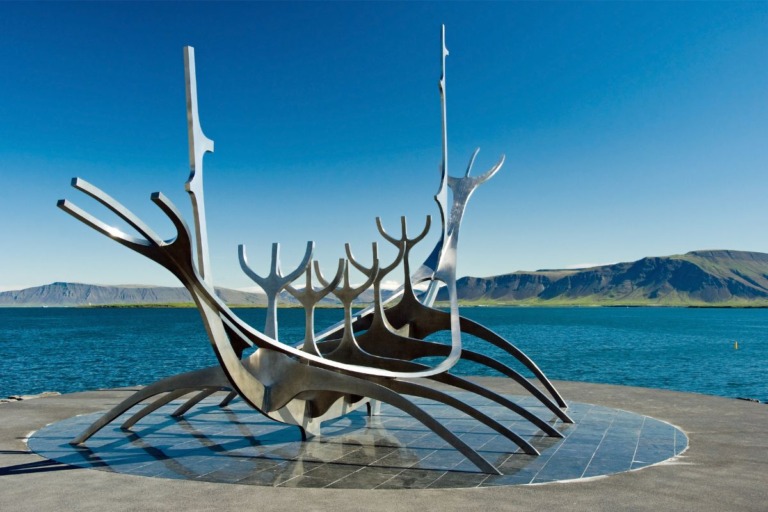Reykjavik is not only the capital of Iceland but also the heart of the nation's cultural and economic life. Here's some fascinating facts about Reykjavik.
Our tour of the Nordic region continues by heading to Iceland. Specifically, we're off to the island nation's small capital, Reykjavik. With a population of just 233,000, it boasts a unique distinction of being both intimate and cosmopolitan.

Indeed, despite its modest size by global standards, Reykjavik is a powerhouse, significantly influenced by its status as the administrative and cultural capital of the country.
Home to nearly two-thirds of Iceland’s total population, Reykjavik serves as a central hub for both locals and tourists alike. The city offers a rich array of activities throughout the year.
Visitors can delve into the depths of Iceland's Viking heritage, explore the contemporary art scene, or unwind in the soothing warmth of its numerous geothermal pools.
Additionally, Reykjavik is a window to the natural wonders of Iceland, serving as a starting point for adventures into the volcanic landscapes that define this rugged island nation.
In preparation for your visit, or simply to satiate your curiosity about this unique city, here are 10 fascinating facts about Reykjavik that highlight its history, culture, and its pivotal role in Iceland's charm and allure.
1. The northernmost capital
Reykjavik is the northernmost capital city of a sovereign state in the world, offering a unique blend of cold climate and warm culture. Located at at 64°08′ N, this geographical distinction contributes to its distinctive lifestyle and traditions.
Winter days are short, with only a few hours of twilight, while summers are marked by the midnight sun, which barely sets below the horizon. These extremes in daylight shape daily life, from the timing of social activities to the rhythm of sleep and work.
2. Reykjavik means ‘Smoky Bay'
The name Reykjavik, translating to ‘Smoky Bay,' carries with it echoes of the city's ancient origins and natural features.

This evocative title was inspired by the billowing steam that early Norse settlers witnessed rising from the area's numerous hot springs. The sight was so characteristic and striking that it left a lasting impression, eventually becoming synonymous with the settlement itself.
The term “vik,” meaning bay, is prevalent in geographic names across the Nordic countries, linking Reykjavik to a broader regional tradition of place-naming.
This etymology not only highlights the city's deep historical roots but also reflects its connection to the dramatic and dynamic Icelandic landscape, where the natural world shapes both culture and identity.
3. Reykjavik is a literary hotspot
Despite its small population, Reykjavik is renowned as a literary haven. In 2011, it earned the distinction of becoming the first non-native English-speaking city to be designated a UNESCO City of Literature.
This prestigious recognition underscores Reykjavik's remarkable literary heritage, notably its pivotal contribution to the preservation of the Norse sagas. These ancient texts form a cornerstone of medieval literature and are crucial for understanding Norse mythology and Viking history.
Additionally, the accolade celebrates the vibrant role that literature continues to play in Reykjavik's contemporary cultural scene, reflecting the city's ongoing commitment to fostering literary expression and appreciation.
4. Puffins call Reykjavik home
Reykjavik is unique among capital cities for its significant puffin colony. It holds the distinction of being the world’s only capital with a major puffin breeding ground nearby.
Given that more than half of the world's puffin population nests in Iceland annually, it's not unexpected that a substantial number of these birds are drawn to the capital's vicinity.
Just west of the old harbor lies the small island of Akurey, which alone is a thriving habitat for over 20,000 breeding pairs of puffins, making it a prime spot for birdwatching enthusiasts.
5. Reykjavik's tallest building is a church
The most prominent architectural landmark in Reykjavik is Hallgrimskirkja church, which at 244 feet stands as the tallest building within the city limits.
Surpassed in height only by an office building in the neighbouring suburb of Kopavogur, Hallgrimskirkja's towering presence has been a defining feature of the city's skyline since its completion in the 1980s.

This iconic church, perched atop a hill, is not only a significant place of worship but also a beacon of cultural identity, drawing visitors from around the world. Its unique design, inspired by Iceland's volcanic basalt columns, makes it a striking symbol of national heritage and artistic innovation.
The church also offers a viewing deck, providing panoramic views of the city and its surrounding landscapes, enhancing its status as a must-visit destination in Reykjavik.
6. The Leif Erikson statue was a gift
The statue of Leif Erikson standing proudly outside Hallgrimskirkja church was a gift from the United States
It was presented in 1930 during the Althing Millennial Festival, which celebrated the 1000th anniversary of Iceland's first parliamentary assembly, marking a millennium of governance and culture.
7. Harpa Concert Hall is a modern icon of Reykjavik
Harpa Concert Hall is a stunning emblem of modern Icelandic culture and architecture. Situated on the edge of Reykjavik’s harbour, it catches the eye with its distinctive glass façade, designed to reflect both the city lights and the natural landscape around it.
The building, completed in 2011, was designed by the Danish firm Henning Larsen Architects in cooperation with Icelandic architectural company Batteríið Architects, and features an iconic geometric glass structure created by artist Olafur Eliasson.
Harpa is not just a feast for the eyes; it is also an acoustical marvel, renowned for its exceptional sound quality.
It serves as the home of the Iceland Symphony Orchestra and the Icelandic Opera, and hosts a range of performances from classical to contemporary music, as well as conferences and cultural events.
The concert hall has quickly become a cultural hub in Reykjavik, drawing visitors and artists from around the globe.
Its presence on the waterfront symbolizes Iceland’s historical and cultural connection to the sea while showcasing its forward-looking approach to arts and cultural expression.
8. The Viking Ship sculpture
Another notable landmark of Reykjavik is the striking Viking ship sculpture, officially known as the Sun Voyager (Sólfar).
Situated along the scenic waterfront, this stainless steel sculpture was created by Jón Gunnar Árnason. It is an ode to the sun and a dream of hope, freedom, and progress, symbolising the Viking past of Iceland and the historic voyages across the Atlantic.

The Sun Voyager is particularly beloved for its picturesque location and the way it beautifully captures the light during sunrise and sunset. It is one of the most photographed sites in Reykjavik.
9. Reykjavik is heated by geothermal activity
Iceland's rich volcanic activity makes it a powerhouse for geothermal energy, which is harnessed to satisfy nearly 90% of the country's needs for hot water and heating.
This sustainable energy source is also responsible for the warm, inviting waters of the famed Blue Lagoon and other geothermal spas across the nation.
10. There is no rail system
Currently, Iceland lacks an intercity railroad network, a result of its sparse population and challenging terrain. Although there are proposals for a high-speed rail line connecting Reykjavik and Keflavik Airport, the plans have yet to materialise.
Nevertheless, Reykjavik hosts two historical steam locomotives, relics from a bygone era, once used in the construction of harbour breakwaters in the early 20th century.
These locomotives serve as a nod to Iceland's industrial past and are on display for public viewing.
11. Murder is rare
Reykjavik is remarkably peaceful, with crime rates that contrast sharply with the grim depictions found in Iceland's popular Nordic noir literature.
According to the country's minister of justice in 2019, Iceland saw only 37 intentional homicides over the past two decades, underscoring its status as one of the safest countries in the world.
12. Reykjavik rarely enjoys a hot summer
Despite global climate trends, Reykjavik maintains its reputation as one of the coolest and cloudiest capitals.
The highest temperature ever recorded in the city was a mere 78.3 degrees Fahrenheit, a mark set in July 2008. This mild climate reflects Iceland's geographical position and oceanic influences.
13. Reykjavik's climate is changing
Historical climate data from 1960 to 1990 classified Reykjavik's climate as either subpolar oceanic (Köppen Cfc) or subarctic (Köppen Dfc).
However, more recent records from 2000 to 2014 consistently categorise it as subpolar oceanic (Köppen Cfc). This shift likely reflects the broader trend of climate warming in the region
14. There are no McDonald's restaurants in Reykjavik
Reykjavik also stands out for its absence of McDonald's restaurants. In fact, since the last one closed its doors in 2009, there hasn't been a single McDonald's in all of Iceland.
However, fast-food aficionados need not despair; Reykjavik offers other international chains like Taco Bell, KFC, Domino's, and Pizza Hut, as well as a variety of unique local eateries.

